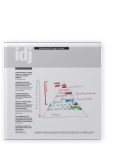Vol. 21:2 (2014) ► pp.163–178
Hypertext in online news stories
More control, more appreciation
News websites struggle tailoring news stories to divergent needs of online news users. We examined a way to bridge these needs by representing sources in hypertext. News items were designed to be short and concise, with hyperlinks citing sources. Readers could either ignore hyperlinks or explore additional information from the hyperlinked sources. We expected that appreciation for these news stories would be moderated by personal characteristics, namely hypertext comfort and desirability of control. In a 2 (hyperlink presence) x 2 (directness of speech) experiment, two news stories were manipulated for a Dutch national news website (NOS.nl). For each story, four variants were developed: Text containing hyperlinks, plain text only, citing the sources directly, citing in the words of the journalist. Dependent variables were perceived control, appreciation, and absorption in the story. Results showed that news stories with hyperlinked sources affected perceived control positively, especially for those with a high desirability of control. Directness of speech did not have any effects. The relation between hypertext and appreciation was mediated by perceived control.
